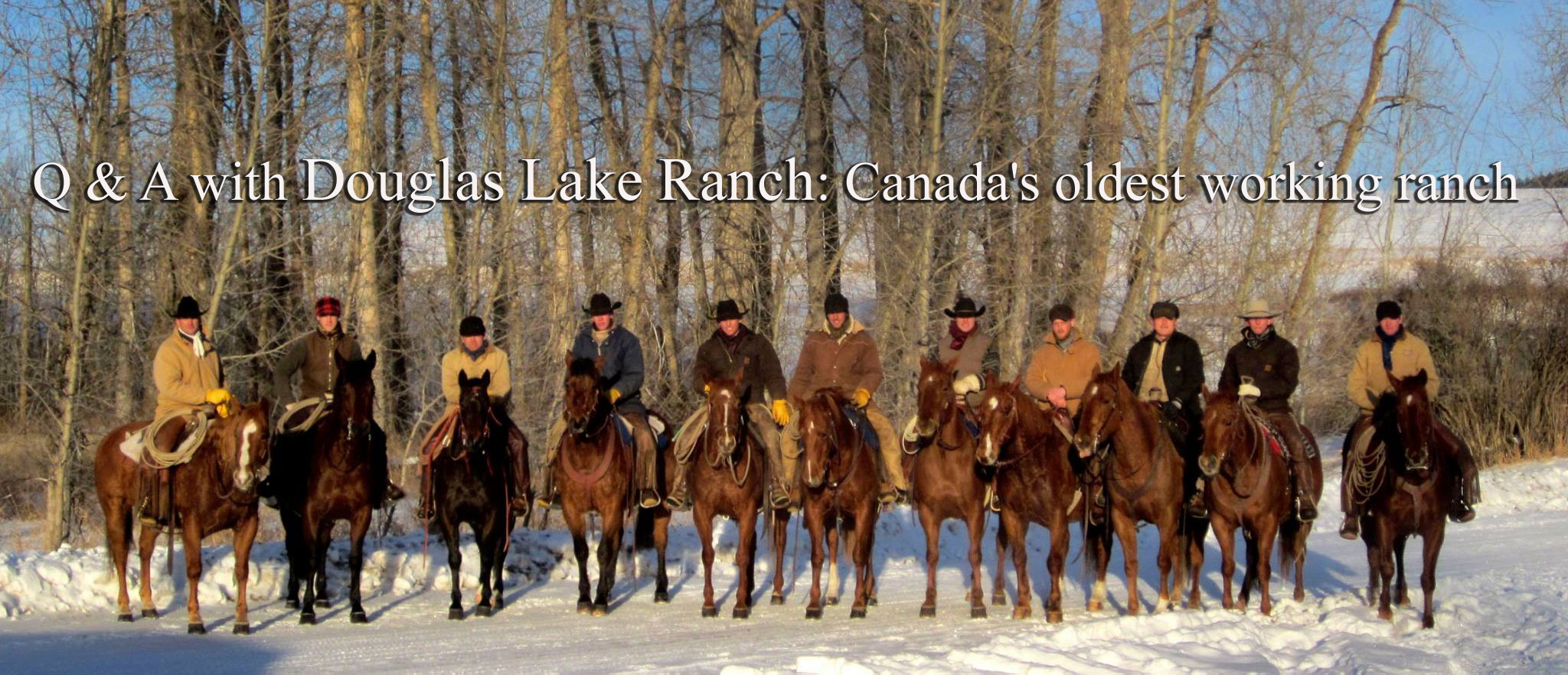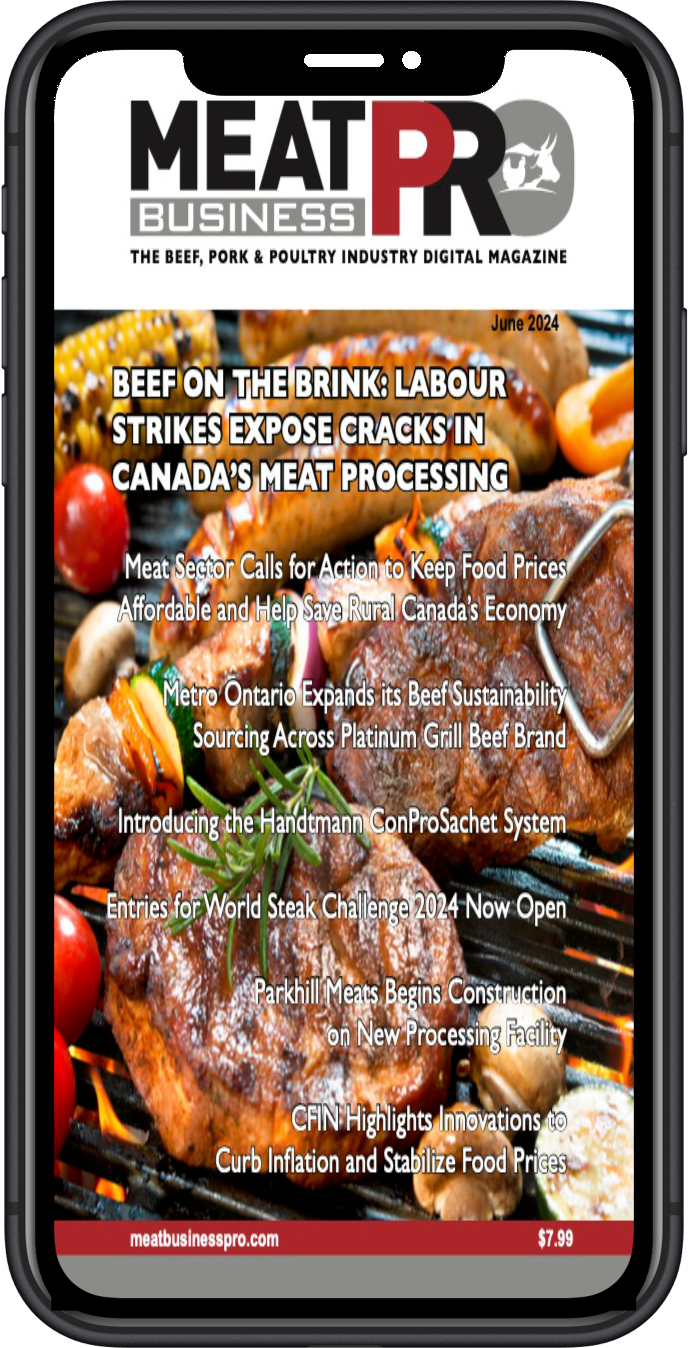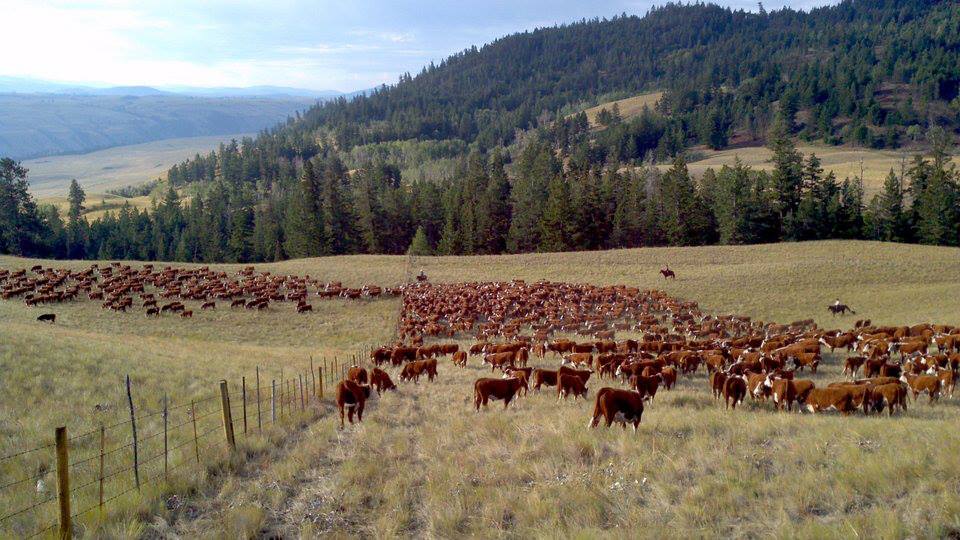Douglas Lake Ranch Q & A: Canada’s Oldest Cattle Ranch

Few Ranches in Canada have a history like the Douglas Lake Ranch. It has the distinction of being one of the oldest working ranches in the country as well as one of the largest. Originally founded in 1886 during what is known as the “golden age” of B.C cattle ranching when interior farms supplied the bulk of the beef demand for a booming Vancouver. By 1907 the CPR line laid the tracks and the rest as they say is history. Today the ranch spans from Kamloops to Shuswap Lake, stretching north east to the Thompson Plateau. The ranch has expanded into a resort, complete with fly fishing, but at it’s core, it is and will always remain, one of Canada’s largest working ranches
–We talked with Douglas Lake Cattle Company assistant manager, Phil Braig, about the ranch steeped in the traditions that built it while having a firm grasp of the future and our changing industry.
CMB: Phil can you tell us a bit about DLR Ranch and what a typical day is like on the largest ranch in Canada.
PB: Well, Douglas Lake Cattle Company is currently comprised of 248,000 deeded acres and over 800,000 crown grazing acres, totaling well over 1 million acres under management. This includes our Alkali Lake Ranch located 45 minutes southwest of Williams Lake, BC which was acquired by our present owner in 2008 and expanded in 2013 with the addition of the Circle S Ranch. These ranches are now fully integrated and are run as one operation with management decisions being made from our head office at Douglas Lake. In 2014, Quilchena Cattle Company, our neighbours here at Douglas Lake, were also acquired and integrated with existing operations as well as adding a heritage hotel, golf course and RV park to our recreation business which includes Stoney Lake Lodge, Salmon Lake Resort and various other camping and fishing lakes. In total, the ranch can accommodate over 700 guests on the property at any given time. Our personal numbers fluctuate throughout the year depending on the season but we generally go from a summer high of around 140 employees to around 100 during the winter months. This is due to seasonal positions in our farm and recreation divisions.
Our cattle operation consists of approximately 10,000 mother cows of which 70% are run at Douglas Lake and the remainder at Alkali Lake Ranch. Our Alkali Division is operated independently on a day to day bases but is closely integrated with our Douglas Lake operations in terms of genetics, marketing, animal health and overall management strategies.
CMB: That is an impressive operation. What breeds does the ranch typically raise and why.
PB: At all operations we raise Hereford and Angus cross cattle consisting of a straight Hereford base herd from which we cross heifers with Black Angus bulls for our Black Baldie cow herd. We then cross these Black Baldies with Charolais bulls for a terminal cross calf which we market in the fall. We background our Hereford calves here at the ranch to be turned back out on grass in the spring and sold as long yearlings in the fall. We have found this breeding system to be well suited to our climate and terrain conditions and it has proven to be a profitable system for us.
CMB: So with a herd of this size and the push for non – hormone meat and sustainable cattle programs, has this changed the way DLR manages the herd today.
PB: That’s a good question. Given our over 130 year history it is apparent to us that we are a sustainable agricultural operation. We strive day to day to be good stewards of the land and have been recognized for this through Environmental Stewardship awards and we participate in various verification programs such as Verified Beef. We continue to strive to further our conservation efforts and work closely with Fisheries and organizations such as Ducks Unlimited to progress in this regard.
CMB: So being a ranch and a resort, what is the regime to promote animal health and what bio-security measures do you follow at DLR.
PB: Well, given our volume of tourist traffic on the ranch we take bio-security very seriously and closely monitor and keep records of those that have visited the property. We are fortunate that most of our tourist attractions and accommodations are well away from cattle operations and are not in the vicinity of processing barns and handling systems.
CMB: I’m curious with such a vast acreage and large herd, how DLR manages grazing.
PB: Aside from being able to take advantage of our economies of scale our single biggest advantage as a cattle operation is the amount of high producing deeded grazing land we have available to augment our crown grazing tenures. We have the ability to turn our cattle onto grass as early as mid-march before we are able to utilize our crown grazing permits and again in the fall when cattle must be off of crown range. We again have the ability to utilize our own grass before winter drives the cattle onto feed. Most years we can get away with a 60 to 90 day feeding period. Every day that we can avoid mechanically feeding cattle is a significant savings!
On the farm side, we produce approximately 30,000 tonnes of silage and 8,500 tonnes of baled hay annually. This is adequate for our backgrounding operations and no extra feed is purchased except some GSP’s or barley to supplement our feed rations.
CMB: What are some of the pros and cons of operating a ranch the size of DLR and how would you say the ranch has changed and/or used technological advancements in the industry.
PB: As an organization we are keenly interested in taking advantage of technological advancements in all aspects of our operations. This includes variable rate technology on the farm side, electronic ear tags for cattle tracking and animal health on the cattle side and the use of UAV’s for weed spraying and monitoring crop conditions. I believe technology utilization in the ranching industry is the low hanging fruit that is yet to be fully utilized both in terms of technology to assist in day to day operations and biotechnology in terms of genetic improvements in selecting for economically relevant traits.
CMB: What would you say is the average head sent to market and has DLR felt the impacts of such issues as COOL, trade bans, BSE outbreaks, etc.
PB: In terms of our marketing strategy, a majority of our calves are sold via satellite auction to feedlot buyers in southern Alberta with the remainder going through our local livestock auction. We do not commercially finish any calves of our own except a limited number that we finish and process for our recreation division and for staff consumption. As most readers are aware, BSE and COOL have had a significant impact on cattle prices over the years which have negatively affected the bottom line of most cattle operations and we are no exception. We have been able to weather such storms by our sheer size and sound management practices. As an organization we are optimistic about the future and look forward to strong prices holding steady at least in the medium term.
CMB: So, I have to ask, being a ranch in Interior BC, has the wildfire situation put you on high alert.
PB: During the summer months where day time temperatures can reach as high as 40 degrees, we are constantly on fire watch and are regularly called upon to fight fires on ranch property throughout the summer months. We are fortunate that the BC Forest Service has become quite adept at fighting these fires and are quite sophisticated in doing so and are able to respond quickly to fires on or adjacent to our operations.
CMB: So, Phil, what is the most rewarding part of running a ranch like DLR for you and why.
PB: As a manager of an organization as large as ours I am constantly challenged by such a wide variety of problems and opportunities in a single day that not a dull moment seems to pass. The most rewarding aspect of this job is being able to facilitate the ongoing improvement and development of a legendary ranching company that to this day continues to grow and evolve, continuously adapting to changing conditions. This is being made possible by a team of individuals who are extremely dedicated to their jobs, all sharing an interest in the ranch that in turn inspires those that are new to our organization. We are fortunate to have a long history of employees who have spent their entire careers working for the ranch and regularly give out service awards at our Christmas party for employees that have been with us for 15, 20, 25 years with one last year for 36 years of service!
Cam Patterson – Canadian Meat Business















